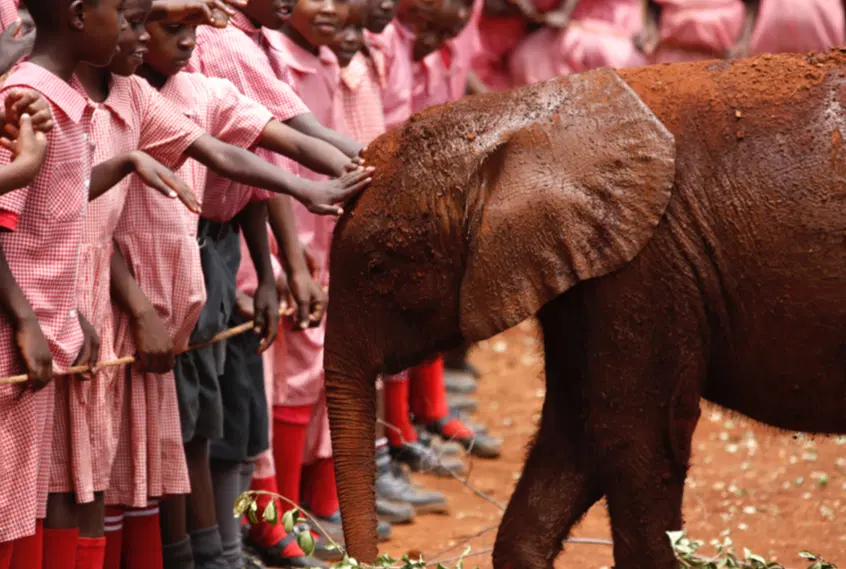BRING STOP POACHING NOW! INTO YOUR CLASSROOM!
The free Classroom Visit Program is designed to be an engaging student experience that focuses on the ecology, behavior, and conservation of one or two of our project species; elephants, rhinos, and tigers. A key objective of the classroom visit is to empower students to turn knowledge into action and become active participants in conservation efforts at both the local and international level.
Based Firmly in Science to meet multiple performance expectations for the Next Generation Science Standards for elementary, middle, and high schools.
Engaging 45-60 minute presentation (either live or remote) designed to accommodate multiple learning styles and delivered by an experienced classroom educator.
Designed, to fit the curriculum for STEM courses in biology, general, earth, and environmental science but available for any classroom.
Accompanied by classroom exercises and active learning activities.
Tailored to each teacher’s individual needs.
Empowers students to become active participants in conservation and pursue careers in science.
Middle School
- MS-ESS3-3: Design a method for monitoring and minimizing human impact
-
MS-ESS3-4: How increases in human population and per-capita consumption of natural resources impact Earth’s systems
-
MS-LS2-5: Evaluate competing design solutions for maintaining biodiversity and ecosystem services
-
Science and Engineering Practices: Define a problem that can be solved through the development of an object, tool, process or system (MS-ETS1-1)
-
Disciplinary Core Ideas: Human activities have significantly altered the biosphere, sometimes damaging or destroying natural habitats and causing the extinction of other species (MS-ESS3-3)
-
Crosscutting Concepts: Patterns can be used to identify cause-and-effect relationships (MS-ESS1-1)
High School
Earth (ESS) and Life Science (LS) Performance Expectations
- HS-LS2-2: Factors affecting biodiversity and populations.
- HS-LS2-6: Changing conditions may result in a new ecosystem
- HS-LS2-7: Solution for reducing the impacts of human activities on the environment and biodiversity
- HS-LS4-6: Solutions to mitigate impacts of human activity on biodiversity
Three Dimensions
- Science and Engineering Practices: Design, evaluate, and refine a solution to a complex real-world problem, based on scientific knowledge (HS-LS2-7)
- Disciplinary Core Ideas: Sustaining biodiversity so that ecosystem functionality and productivity are maintained is essential to supporting and enhancing life on Earth (HS-LS2-7, HS-LS4-6)
- Crosscutting Concepts: Stability and Change (HS-LS2-6, HS-LS2-7) and Cause and Effect (HS-LS4-6)


